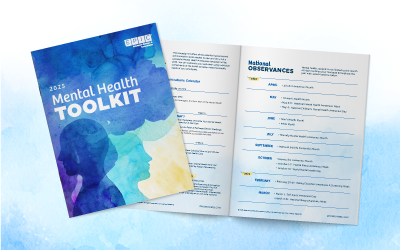Viewpoints from Bob Simpson
Your heart races. Your breath comes in short gasps. You can’t feel your face. No, you aren’t having a nightmare – you’re about to give an Open Enrollment presentation. Except this year, it may be even more nerve-wracking because you have to present in a virtual meeting instead of in person.
The pandemic has created a lot of understandable angst around Open Enrollment (OE) meetings this year and the new virtual element that will be incorporated. In the past, you’ve been able to stand in front of employees and gauge their reactions – read the room, if you will – but this year may be different. So how do you respond? Fortunately, it’s a topic I, along with my colleague and EPIC National Learning & Development Director, Kate Tabony Rose, spoke about at the recent “Employee Benefits University” event held for EPIC account management teams. Our guidance is centered around the three key phases of any presentation:
- Prepare – how you approach the presentation
- Design – building out the presentation
- Deliver – executing the presentation
Prepare
Before you deliver the presentation, the work ahead of you may seem unassailable, like a mountain ringed in fire and guarded by five-year-olds full of Mountain Dew. But here are some tips to help you out with those first few steps:
| KISS | Please note that this is an acronym, not a yelled suggestion, like that old guy on the porch in It’s a Wonderful Life. You’re likely familiar with the acronym, but let’s change it up a little so it’s less rude – Keep It Simple (not) Stupid Think about the core of your message and ask, “if I want the audience to remember only three things, what would they be?” Though OE subject matter is not simple, boiling down all your content into three things you’d like the audience to remember lets you approach the topic from a place of greater simplicity |
| Start with the end in mind | Before you write your first word, think about what you hope to get out of this presentation. What is your goal? Why are you being asked to present? What does the audience expect? Then, plan backwards. With the end in mind, you can more easily craft the presentation that will lead you there |
| Ask questions | If you are able, survey your audience before you build your presentation. This will provide insight into what they want or need to know, or what is important to them. You’ll have confidence knowing that the presentation will address their concerns or questions |
Design
Though the delivery of the presentation is often what causes people the most short-term stress, it’s the design of the materials that can feel like the most work. How do you create a presentation that gets the point across without confusing the audience?
| Pictures are your pal | Visual imagery is stimulating and can often tell a story better than the written word. Pictures, diagrams, tables and charts help organize your thoughts and get your point across without turning the slide into an eye chart |
| Animation or builds can be helpful | If you are concerned a slide has too much information to absorb, use animation or other mild builds in PowerPoint to create more digestible chunks of information. Think of the infamous plan design chart – all those columns and rows can be a lot to process. By adding a box with a color outline over the column or row you’re discussing, you can help the audience see what you’re referring to |
| Trim those words | A slide should have 30 to 40 words on it MAX. If you have more than that, find ways to consolidate or, better yet, put all those words into your speaker notes or into a handout for the audience to take away from the meeting. If the audience is reading, they’re probably not listening to you! |
| Ask three questions on each slide | Put yourself into the audience members’ shoes and make the content more relatable, by asking: 1. What does the audience need to remember? 2. What does the audience need to see (or better yet, what do they need to see FIRST)? 3. Why should the audience care? |
Deliver
The actual “performance” of OE presentations may be a big change for you this year as virtual meetings are introduced. Here are a few tips for virtual meetings:
| Speak the language of the audience | Remember that your audience is likely unfamiliar with the subject matter you’ll be discussing. Try to avoid complex terms when simpler ones will suffice. You can provide a glossary of terms to your audience beforehand to help them keep up |
| Rehearse | Practice makes perfect, right? Take the time to run through your presentation. Time it out, work on transitions, get comfortable with the material, but don’t rehearse to the point where the performance feels rigid |
| Use interactive webinar tools | Many virtual meeting platforms have chat windows, question forms, polling tools, and other interactive elements. Use these during the presentation to help keep the energy up |
| Finally, if you’re going to be on a webcam | Check out this excellent video on webcam best practices to ensure you’re putting your best foot forward |
2020 has brought a lot of unexpected change, and I hope these EPIC tips can help you deliver engaging and informative OE presentations this year!
Check out our COVID-19 employer resources for employee benefits and risk management on the EPIC dedicated coronavirus webpage
See results from our In It Together COVID-19 pulse surveys by visiting epicbrokers.com/insights/preparing-for-the-new-normal
Related Content
Products
Employee Benefits Consulting
Our dedicated benefits team is focused on delivering better outcomes – to both your benefits program and ...
Products
Communications & Engagement
Our Communications & Engagement team develops effective campaigns that enhance workforce awareness and ...
Products
Compliance
We provide comprehensive consulting services and in-depth education regarding the ever-changing employee ...


